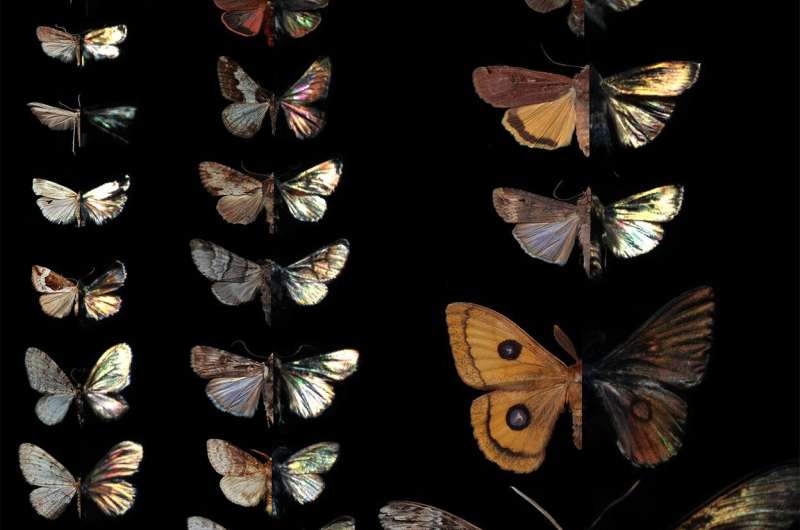Credit: Journal of The Royal Society Interface (2022). DOI: 10.1098/rsif.2022.0256
A team of researchers working at Lund University in Sweden has found that despite their drab appearance in daylight, moths have a wide variety of bright coloring when viewed using an infrared camera. In their paper published in Journal of the Royal Society Interface, the group describes the interesting coloring of 82 moth specimens.
As the researchers note, compared to moths, butterflies tend to get a lot more attention from people in general and the research community in particular. They attribute the difference to aesthetics—butterflies are pretty and moths are drab. In this new effort, they set themselves the task of learning more about how moths look to one another or to other creatures in the dark. To that end, they photographed 82 specimens involving 26 species using infrared cameras.
Other researchers had found that the wings of moths are covered in scales that generally appear brown or gray in sunlight, which helps them avoid being seen by predators such as birds. In capturing how they look when viewed in the infrared wavelengths, they found the wings to be glossy and sometimes even brightly colored. They also found that many of the moths were every bit as beautiful as butterflies with rich colors and striking patterns.
To reveal such striking beauty in the moths, the researchers used a technique that involved analyzing wavelength information in photos that is invisible to the human eye. They found that each species of moth had a distinct coloring pattern. In analyzing the patterns of light reflected from the wings, they found that they could make reasonable estimations regarding the structure of the scales. As one example, they compared the different wavelengths of light reflected by the scales on two kinds of pepper moth—one black and one white. Prior research had suggested the difference in color was due to the amount of melanin. The researchers found that it was more likely due to the structure of the scales on their wings. They suggest that infrared photoanalysis can be used to identify species of moths.
More information: Meng Li et al, Potential for identification of wild night-flying moths by remote infrared microscopy, Journal of The Royal Society Interface (2022). DOI: 10.1098/rsif.2022.0256
Journal information: Journal of the Royal Society Interface
© 2022 Science X Network
























